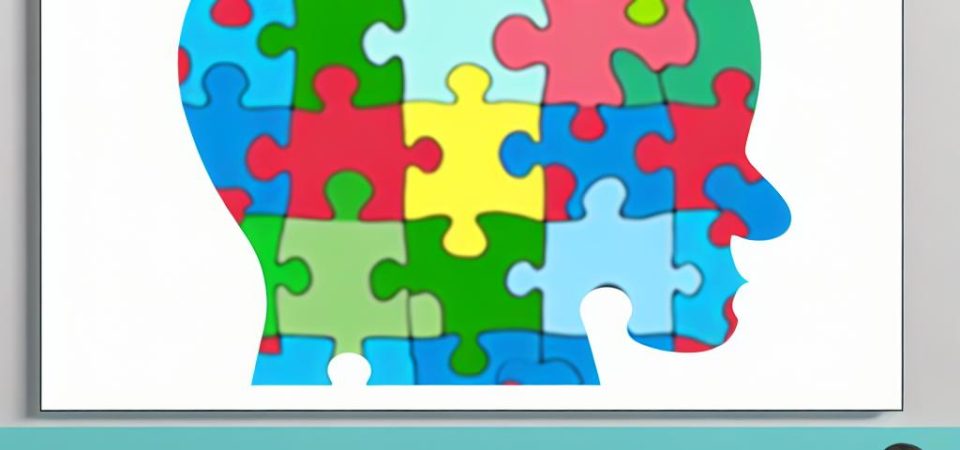Understanding Autism Spectrum Disorder (ASD)
Autism Spectrum Disorder, commonly referred to as ASD, is a complex neurological and developmental condition that affects individuals differently. It primarily impacts social interaction, communication, and behavior. ASD is a spectrum, meaning its effects vary greatly; one individual with ASD may experience symptoms that are very different from those experienced by someone else with the same diagnosis.
Characteristics of Autism
ASD is characterized by a range of symptoms and behaviors, which vary significantly among individuals. Some common characteristics include difficulties with social interactions, challenges in communicating verbally and non-verbally, and repetitive behaviors. Social Interactions: Individuals with ASD often find it difficult to read social cues or understand social norms. They may struggle with eye contact, comprehend others’ emotions, or engage in typical social interactions. Communication Challenges: Both verbal and non-verbal communication can be affected in individuals with ASD. Some might have a limited vocabulary or find it hard to maintain a conversation. Others might rely heavily on non-verbal cues, like pointing instead of speaking, or use gestures that are hard for neurotypical people to interpret. Repetitive Behaviors: Repetition is another common trait of ASD. Individuals may show strong preferences for routines and may become distressed if these routines are disrupted. They may also engage in repeated body movements, such as rocking or flapping their hands. Unique Strengths: Many individuals with autism may also have unique strengths, such as aptitude in specific subjects or exceptional memory skills. Their ability to focus intensely on areas of interest can lead to remarkable expertise or achievements in those areas.
Diagnosis and Prevalence
Diagnosing autism typically involves a comprehensive evaluation by healthcare professionals, often including pediatricians, psychologists, and neurologists. This evaluation encompasses a detailed conversation about the individual’s behaviors and developmental milestones, often utilizing standardized tests and guidelines. The diagnosis can occur as early as infancy, but it is more common for children to be diagnosed between the ages of two and three. Early diagnosis is fundamental in accessing interventions that support developmental progress. In recent years, there has been a noticeable increase in the number of diagnosed cases. This rise can be attributed to better awareness, expanded diagnostic criteria, and increased access to diagnostic services. However, variations in prevalence rates worldwide suggest that cultural, environmental, and methodological factors also play roles. Developed countries tend to report higher rates due to more established healthcare infrastructure for diagnosis.
Potential Causes of Autism
The exact cause of ASD remains unclear. However, research suggests that a combination of genetic and environmental factors may contribute to its development. Genetic Factors: Many studies indicate a significant genetic component. Having a sibling with ASD increases the likelihood of developing the condition. Certain genetic mutations have been associated with autism, but no single genetic alteration is predictive. Environmental Influences: Environmental factors might include prenatal and perinatal influences. Advanced parental age, low birth weight, and some prenatal medications have been hypothesized as potential risk factors. Nevertheless, the interplay between genetic predisposition and environmental factors continues to be an area of active research. Neurological Components: Studies have also shown that people with autism have differences in brain structure and function. However, these findings are not yet fully understood.
Treatment and Support
While there is no cure for autism, a variety of interventions and therapies can help individuals manage symptoms and enhance their quality of life. Common approaches include behavioral therapy, speech and language therapy, and occupational therapy. Behavioral Therapy: One of the most widely used interventions for ASD is Applied Behavior Analysis (ABA), which focuses on improving specific behaviors, such as social skills, communication, and academics, while minimizing behaviors that are challenging. Speech and Language Therapy: This therapy aims to improve an individual’s verbal and non-verbal communication skills. It can aid those who struggle with conversational abilities, teaching them how to use language effectively. Occupational Therapy: Occupational therapy helps individuals with autism develop daily skills required for independent living, such as dressing, eating, and interacting with peers. Early Intervention: Early intervention is crucial, as it often leads to better outcomes. Programs tailored to young children can address and potentially alleviate symptoms in the early years of life, fostering talent and relieving difficulties.
Resources and Further Reading
For more information on autism, consider exploring resources provided by reputable organizations such as the Autism Speaks website or the Autism Society. These organizations offer a wealth of information, support networks, and tools for individuals and families affected by autism. They frequently provide access to recent research findings, strategies for effective advocacy, educational resources, and tailored advice for various age groups affected by ASD.
Educational Resources: Online courses, webinars, and events hosted by experts can aid parents, caregivers, and professionals in understanding and supporting an individual’s development. Support Networks: Community groups, both online and offline, can be invaluable for sharing experiences and advice in navigating life’s challenges with ASD. Advocating for improved services and policies is a crucial aspect in enhancing the quality of lives for those with autism. Additional Literature: Various books and peer-reviewed articles can provide further insights into the complexities of ASD, offering deep dives into niche topics related to behavior, therapy, and neuroscience.
By continually expanding knowledge and understanding, efforts in autism research and support are geared towards better meeting the needs of individuals with autism and their families, promoting inclusion, and increasing opportunities for a fulfilling life.
